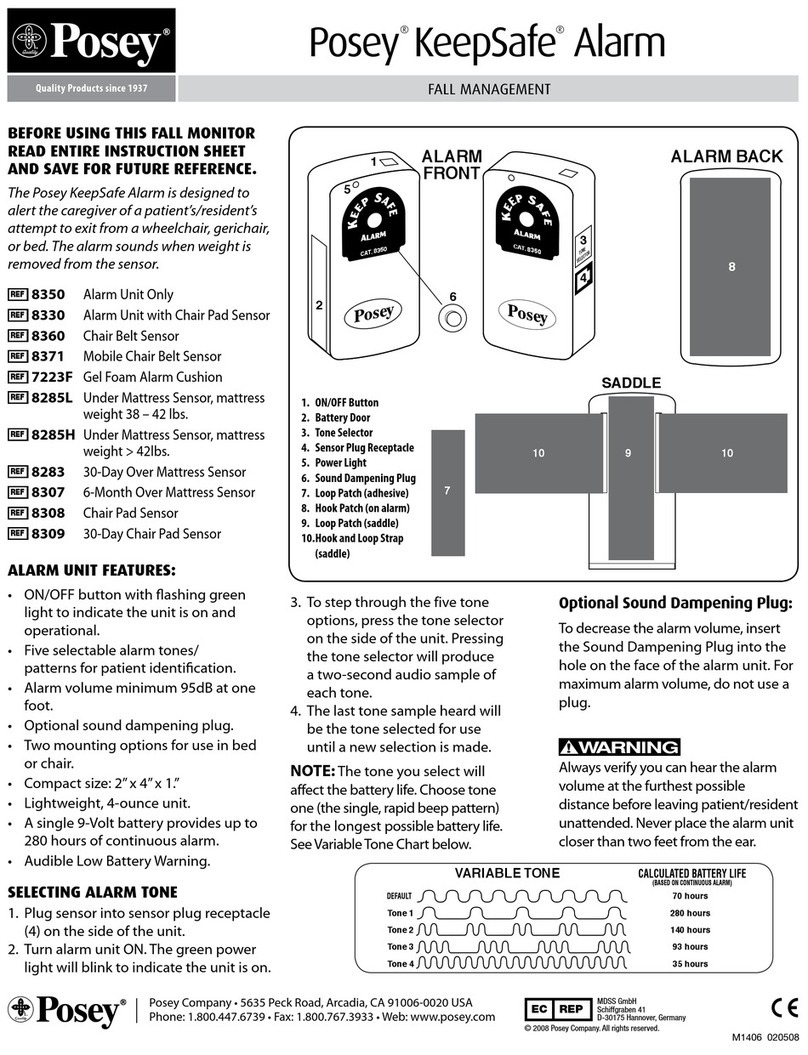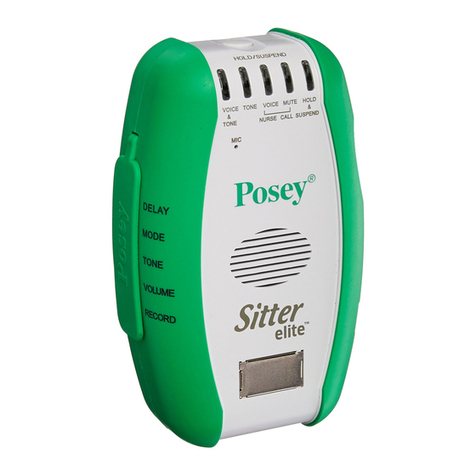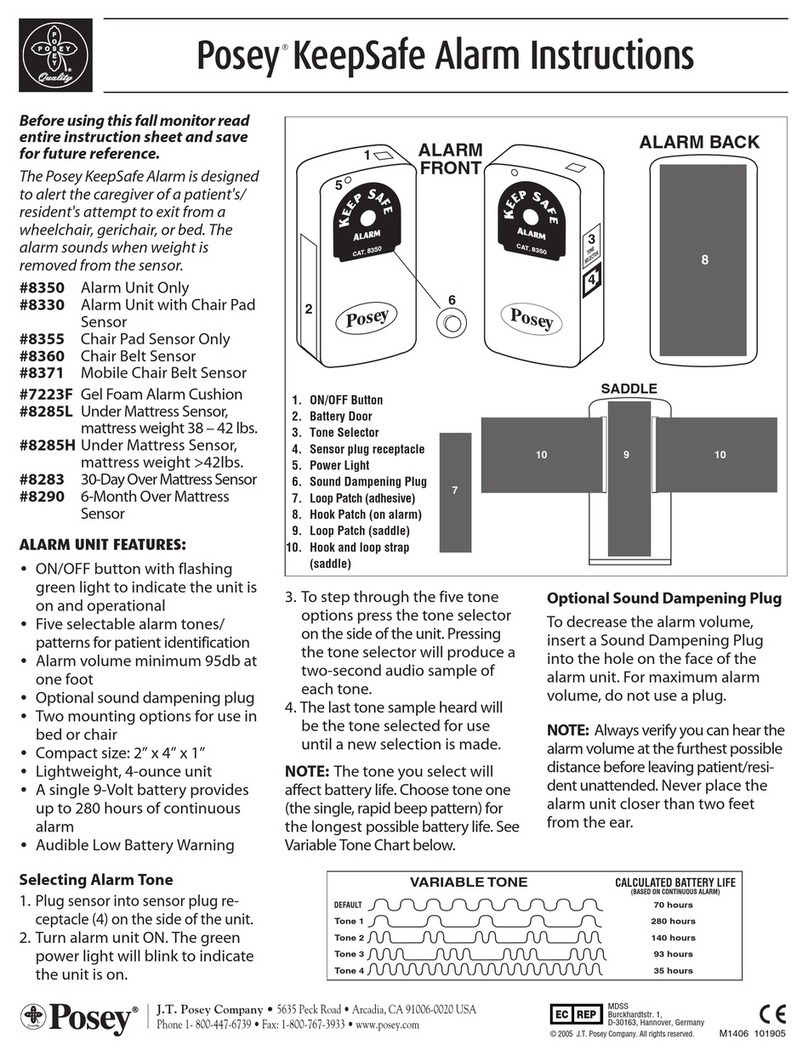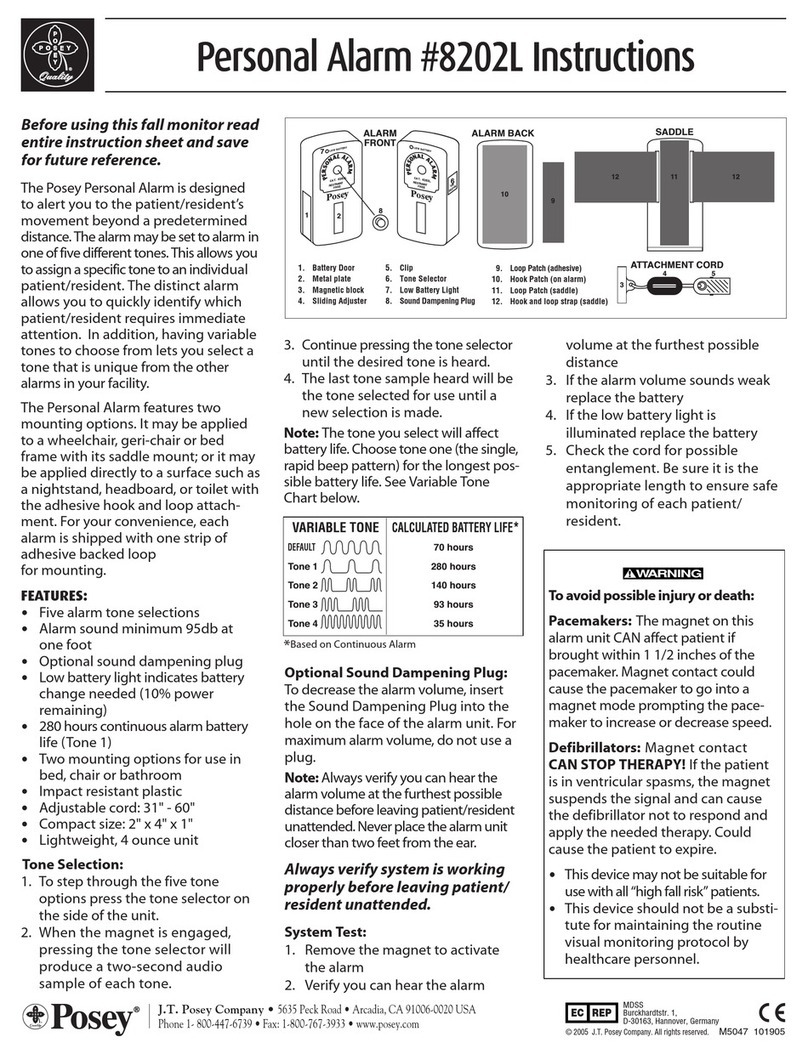
www.posey.com 1.800.447.6739
Sitter On Cue 5
Features of the Sitter On Cue (Cont.)
• Seven alarm tones. There are seven different alarm tone options which can be used in
different patient rooms, or to discern between different caregivers or levels of fall risk for
easy patient identification.
• Four alarm modes. Four alarm modes allow for facility choice regarding caregiver notification
in the event the alarm is triggered. The alarm modes are “Voice and Tone”, “Tone Only”, “Voice
Only” and “Mute.”
• Three alarm volumes. Three alarm volume settings allow for facility choice regarding
caregiver notification in the event the alarm is triggered. The volume options are low, medium
and high.
• Custom Recording. Allows a family member, friend or caregiver to record a personal message
that will sound if pressure is removed from the sensor pad or chair belt sensor is unfastened. The
recording will play only if the alarm mode is set to “Voice” or “Voice and Tone”. This feature can
provide patient communication in their language, or by a caregiver or family member for familiarity.
• HOLD Button. Allows you to remove a patient from a sensor pad without the need to turn off the
alarm (e.g. for therapy, toileting or socializing). Alarm will resume monitoring when patient returns
to the sensor pad.
• Optional alarm delay of 0, 1, or 2 seconds. Allows you to adjust alarm timing for each patient.
The delay allows you to determine, by alarm, the number of seconds between the time pressure is
removed from the sensor, chair belt sensor is unfastened, and the time the alarm activates.
• Dual Sensor monitoring. This alarm connects to any Posey sensor pad, (chair, toilet, commode,
stretcher, over-mattress and chair belt sensors). Alarm activates when weight is removed from
sensor pad, or chair belt sensor is unfastened. Two sensors can be connected to the alarm at the
same time.
• Nurse Call Interface. Provides alarm notice at patient’s room and nursing station. If connected
to nurse call, the Sitter On Cue has the ability to be muted, silencing the alarm at the patient’s
bedside. It will still alarm at nurse call system notification points.
• Failsafe sensor alarm. The Posey Sitter On Cue activates if the alarm is on and a sensor cord is
removed from the alarm.
• Battery operated. The alarm utilizes four (4) “AA” alkaline batteries.
• Visual and Audible low battery warning. Low battery LED will blink red when batteries are
low and an audible cue will say “low battery” when batteries are critically low, alerting caregivers
of the need to change batteries.
• DC Jack. For AC connection.
• AC Adapter. The Sitter On Cue 8645 adapter connection enables users to operate on AC
electrical power.
• Impact resistant cover. Helps minimize damage if dropped.
NEVER connect other manufacturers’ sensors to a Posey alarm. Use of
another manufacturer’s sensors may damage the Posey alarm, cause the fall monitoring
system not to function as intended, and will void the factory warranty.
FE ATU RE S
































